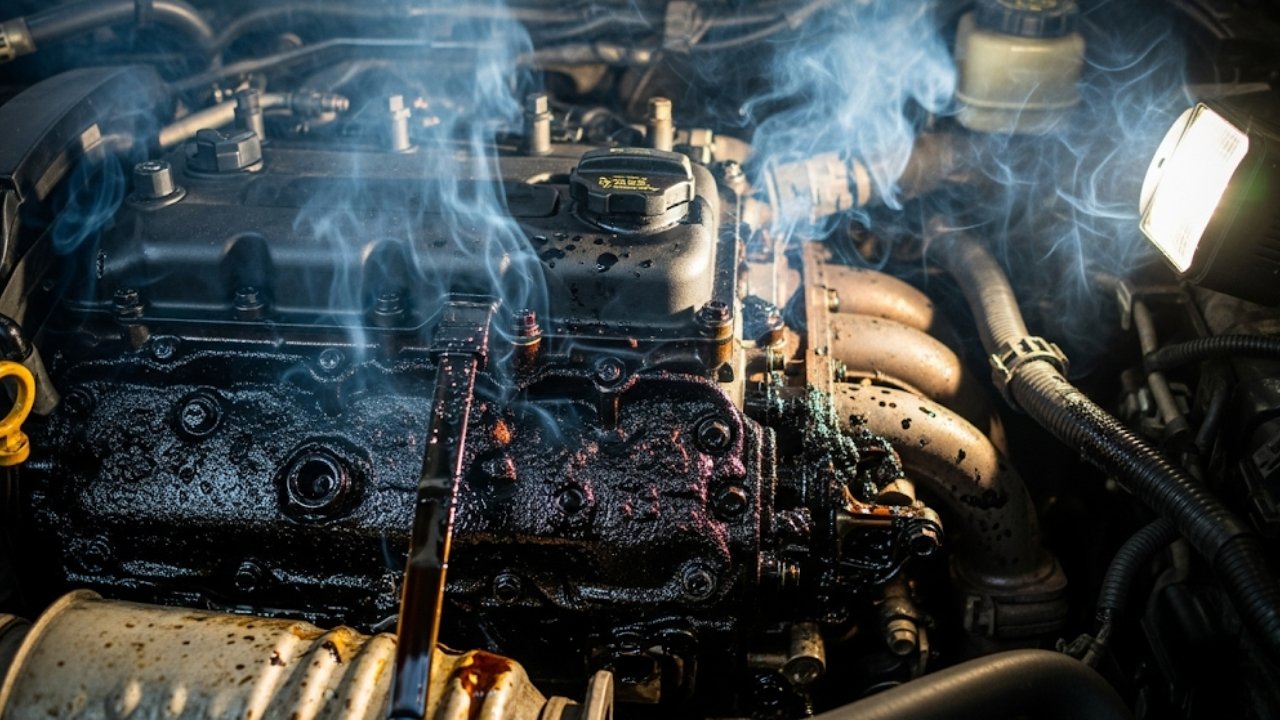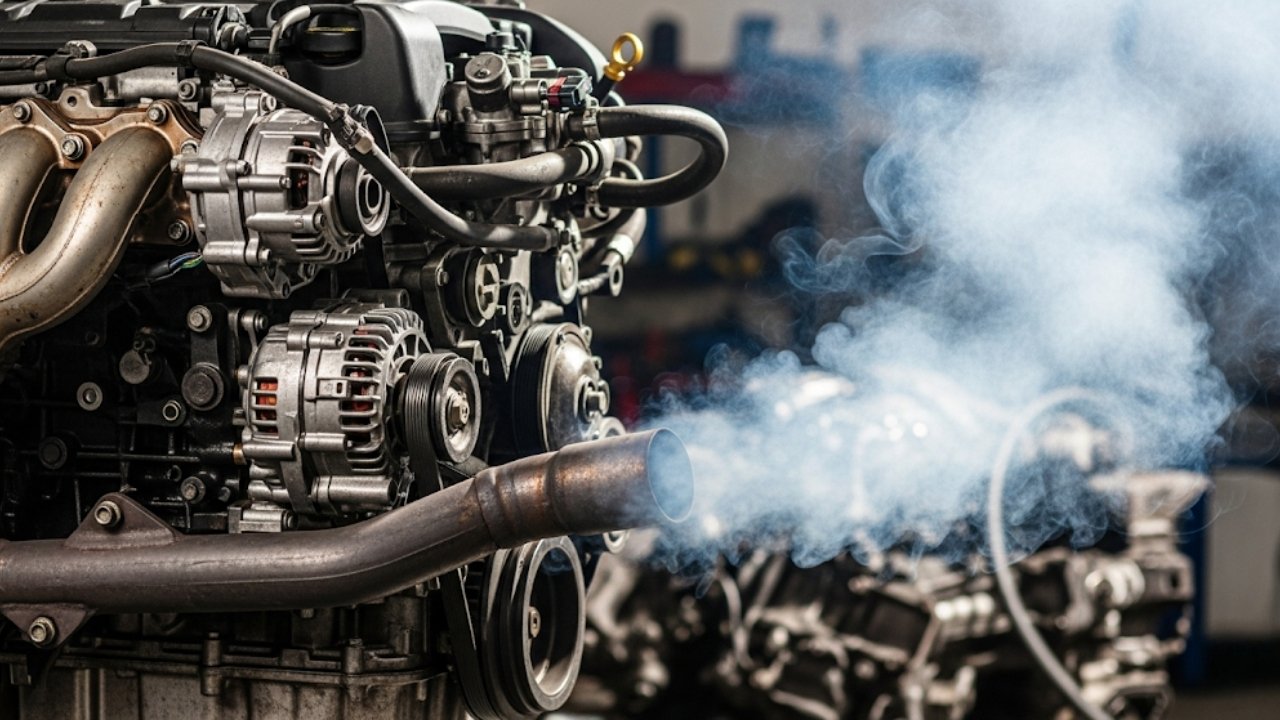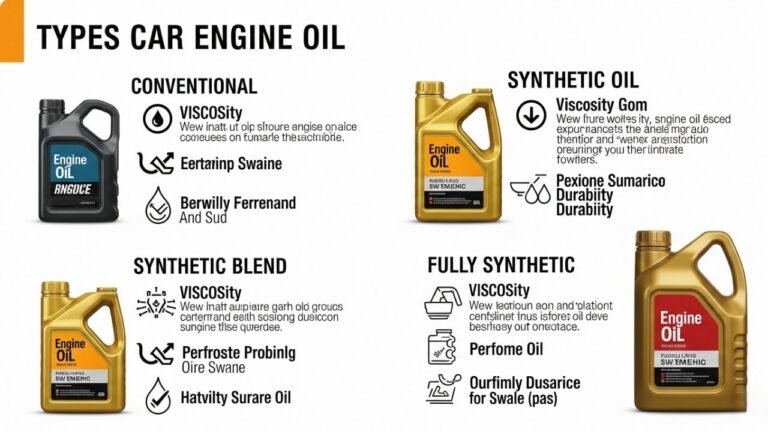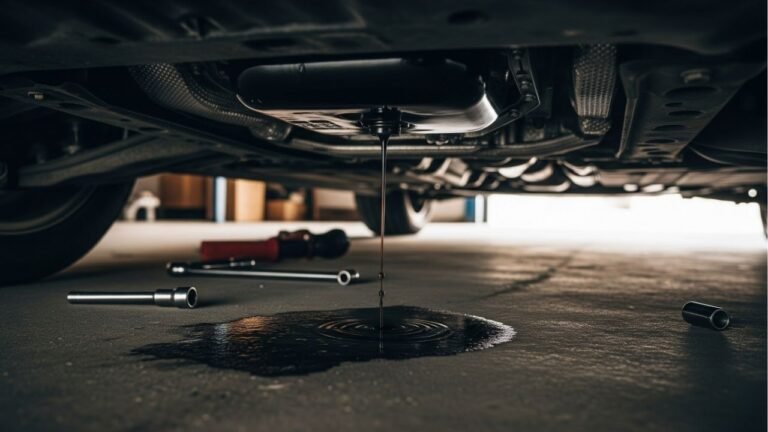Signs of Burning Oil in Car: What They Mean

Ever noticed that sharp, acrid smell when your engine’s running? Or seen blue smoke puffing out the tailpipe? Yeah, that’s your car crying for help. It might be burning oil. And let me tell you—signs of burning oil in car aren’t just about smoke and smell. They hint at deeper engine issues that could lead to costly repairs if ignored.
I still remember when my old sedan started losing oil faster than I could pour it in. It felt like I was refilling it more often than I was filling up gas. Little did I know, it was already burning oil silently for months.
In this article, we’ll unpack the signs of burning oil in a car, what they mean, and how you can stop the damage before it burns a hole in your wallet. Whether you’re a new driver or a seasoned road warrior, this guide will help you spot the early warnings—before it’s too late.
What Does It Mean When a Car Burns Oil?

Usually, it’s caused by worn-out piston rings, faulty valve seals, or bad gaskets. Some modern engines burn a little oil by design, but a noticeable drop in oil level is a red flag.
You don’t always see the problem right away. But you’ll feel it. Smells, smoke, engine noise—these are your car’s way of crying out. Understanding this is the first step to preventing long-term engine damage.
1. Blue Smoke from the Exhaust
If you see blue smoke coming from your tailpipe, your engine is definitely burning oil. The blue tint is a dead giveaway. It’s oil mixing with fuel and being burned in the combustion chamber.
This usually happens when the valve seals or piston rings are worn. Sometimes, it only happens when the car is cold or during acceleration. That’s a clue the valve seals may be bad.
Quick Tip: Let the engine idle for a few minutes. Then press the gas. If you see blue smoke, your car’s burning oil for sure.
Why it matters:
-
Indicates internal engine wear
-
Reduces oil levels faster
-
Fails emissions tests
Real-life example: My cousin’s SUV passed emissions in the summer, but once winter hit, it started puffing blue smoke. Turns out, the valve guides shrank in the cold. Who knew?
2. Burning Oil Smell Inside or Outside the Car
If you’ve ever caught a whiff of something like burning plastic or chemicals after driving, that’s one of the early signs of burning oil in car. The smell is strong and lingers.
This usually happens when oil drips onto hot parts like the exhaust manifold or engine block. It burns on contact, releasing a foul odor. Sometimes, you’ll even see a little smoke rising from under the hood.
Friendly advice: Never ignore a burning smell. It could be oil—or something even worse.
Common causes:
-
Leaky valve cover gasket
-
Spilled oil during refilling
-
Damaged oil pan
Risk: It could start a fire. No kidding.
3. Rapid Drop in Oil Levels
Are you topping off your oil too often? If your dipstick always seems low—even though you just filled it—that’s another major sign of burning oil in car.
Check your oil weekly. If you lose more than a quart every 1,000 miles, something’s wrong. Either it’s leaking, or it’s being burned inside the engine.
What to do:
-
Mark your dipstick and monitor it
-
Use high-mileage oil if your car’s older
-
Check under the car for puddles
Personal tip: I keep a log in my glovebox—miles driven vs. oil added. It’s a simple trick but reveals a lot.
4. Poor Engine Performance
If your car feels sluggish, struggles to accelerate, or starts stalling—burning oil might be the culprit. When oil enters the combustion chamber, it messes with the air-fuel mix. That makes the engine run rough.
You might notice:
-
Hard starts
-
Misfires
-
Decreased MPG
This is especially true in older cars or high-mileage engines. They lose compression over time, which affects power.
Think of it like breathing through a wet rag—your engine’s choking.
Fixing it might include:
-
Replacing piston rings
-
Cleaning carbon buildup
-
Upgrading spark plugs
5. Dirty or Fouled Spark Plugs
When oil burns in the engine, it can leave carbon deposits on the spark plugs. These black, oily plugs don’t fire well. That can cause poor ignition and uneven performance.
Take out a spark plug and look at the tip. If it’s black, crusty, or oily, your engine is likely burning oil.
Helpful habit: Change your spark plugs more often if your engine burns oil.
| Spark Plug Condition | What It Means |
|---|---|
| Tan/Gray Tip | Normal |
| Black & Oily | Oil is being burned |
| Sooty/Black | Fuel mixture too rich |
| White Deposits | Coolant leak or additive |
6. Engine Overheating
Oil helps cool your engine. If it’s burning up, you have less lubrication and cooling power. That causes higher engine temperatures, especially during long drives or in hot weather.
Overheating can warp parts, damage the head gasket, and lead to catastrophic failure. And all because a little oil went where it shouldn’t.
Metaphor time: Think of oil as your engine’s sweat—it keeps things cool. No sweat? The engine burns up.
You may see:
-
Temperature gauge rising fast
-
Warning lights
-
Steam under the hood
Act fast. Never ignore an overheating engine.
7. Clogged Catalytic Converter
Burning oil can clog your catalytic converter. This part filters out harmful emissions, but if it’s packed with soot and oil residue, it can’t breathe.
What you’ll feel:
-
Loss of power
-
Poor fuel economy
-
Rotten egg smell
Worst case? Your exhaust gets backed up and pressure builds. That can blow out your engine seals or damage the muffler.
Tip: Get a diagnostics scan. If your O2 sensors throw a code, the catalytic converter might be clogged due to oil burn.
Common Causes of Burning Oil
Here are the main parts that might be behind the issue:
-
Worn piston rings
-
Leaky valve seals
-
Faulty PCV valve
-
Blown head gasket
-
Damaged cylinder walls
Quick Summary Table: Key Symptoms & Causes
| Symptom | Possible Cause |
|---|---|
| Blue smoke from tailpipe | Oil in combustion chamber |
| Burning smell | Oil leak on hot engine parts |
| Low oil levels | Internal or external leak |
| Poor performance | Fouled spark plugs |
| Overheating | Lack of oil lubrication |
| Oily spark plugs | Burning oil in cylinders |
Bullet Points: Fast Clues Your Car Might Be Burning Oil
-
Blue or bluish smoke from exhaust
-
Sharp burning smell inside or outside the car
-
Frequent need to top off oil
-
Dirty, black spark plugs
-
Rough engine idle or reduced power
-
Visible oil leaks under the car
-
Engine overheating unexpectedly
How to Fix a Car That’s Burning Oil
If your car is burning oil, don’t panic—but don’t ignore it either. Fixing it depends on what’s causing it. Some issues are simple and cheap. Others, not so much.
1. Replace the PCV Valve
A bad PCV (Positive Crankcase Ventilation) valve is one of the cheapest and easiest fixes. This valve removes gases from the engine crankcase. If it’s clogged or stuck, pressure builds up, forcing oil into the combustion chamber.
Cost: $10–$50
Time: 15–30 minutes
Skill level: Beginner
2. Use High-Mileage Motor Oil
Older engines with worn seals often burn oil. High-mileage oil has additives that condition seals and reduce leaks. It’s a quick fix, not a cure—but it helps.
I switched my 200K-mile Camry to high-mileage oil, and oil loss dropped by half.
Best for: Older cars with minor oil consumption
3. Repair Valve Seals or Piston Rings
This is where it gets serious. If oil is slipping past the valve seals or piston rings, the engine needs internal repairs.
Symptoms: Blue smoke, power loss, low compression
Cost: $1,000–$4,000+ (depending on labor and engine type)
Tip: Run a compression or leak-down test to confirm before spending big.
4. Check for External Leaks
Sometimes, oil isn’t being burned—it’s leaking and then burning off hot engine parts.
-
Inspect the valve cover gasket
-
Check the oil pan
-
Look around the timing cover
If you see oil stains or drips, start there. You might only need a new gasket.
How to Prevent Oil Burning in the First Place
An ounce of prevention is worth a gallon of oil.
1. Change Oil Regularly
Fresh oil protects your engine and prevents sludge that can damage seals. Stick to your car’s oil change schedule. Don’t wait until it’s dark and sticky.
Interval: Every 3,000–7,000 miles (depending on oil type and car)
2. Don’t Ignore Warning Signs
The first time you smell oil or see blue smoke, take action. The longer you wait, the more damage you risk.
3. Avoid Cheap Oil
Low-quality oils break down faster, especially in older engines. Use manufacturer-recommended or high-mileage oils for added protection.
4. Keep the Engine Cool
Overheating accelerates wear on piston rings and seals. Make sure your cooling system is in good shape—check the radiator, coolant level, and thermostat.
FAQs About Signs of Burning Oil in Car
1. Can a car burn oil without leaking?
Yes. If oil is entering the combustion chamber due to worn piston rings or valve seals, it burns inside. There may be no external leak.
2. Is it safe to drive a car that’s burning oil?
For short-term use, maybe. But over time, you risk engine damage, poor performance, and dangerous overheating. Always keep oil topped up if you must drive it.
3. What color smoke means burning oil?
Blue smoke is the most common sign of burning oil. It may look grayish-blue, especially when the engine is cold or under load.
4. Will thicker oil stop a car from burning oil?
Sometimes. Thicker oil may not slip past worn seals as easily. It can reduce consumption in older engines but isn’t a permanent fix.
5. Can bad spark plugs cause oil burning?
Not directly. But burning oil can foul spark plugs, leading to misfires and rough engine performance.
6. Can synthetic oil cause burning oil issues?
In some high-mileage engines, synthetic oil can slip past worn seals more easily. High-mileage synthetic blends are better suited for older engines.
7. How often should I check my oil level if I suspect it’s burning oil?
Every week or every 500 miles is a good rule of thumb. Mark the dipstick with a sharpie to track loss.
8. Will using oil stop-leak additives help?
They can help with minor leaks and aging seals but won’t fix serious engine problems. Use them as a temporary aid, not a cure.
Final Thoughts: Listen to Your Car
Your car’s trying to talk to you. That burning smell, the smoke, the sluggish acceleration—it’s all part of a story. One that could end with a blown engine… or a simple fix. It all depends on how early you catch the signs of burning oil in car.
So, keep your ears open and your dipstick clean. Watch the tailpipe. Sniff for smoke. Because once you know what to look for, your car’s whispers become a clear warning—and you’ll know exactly what to do next.






